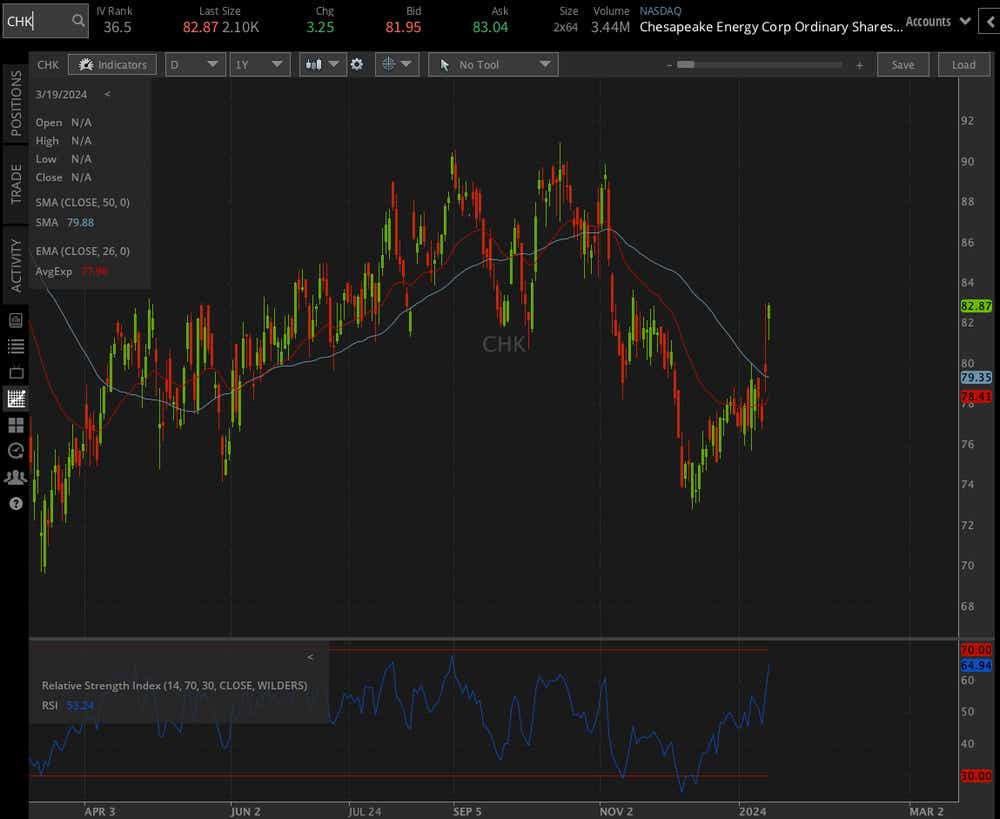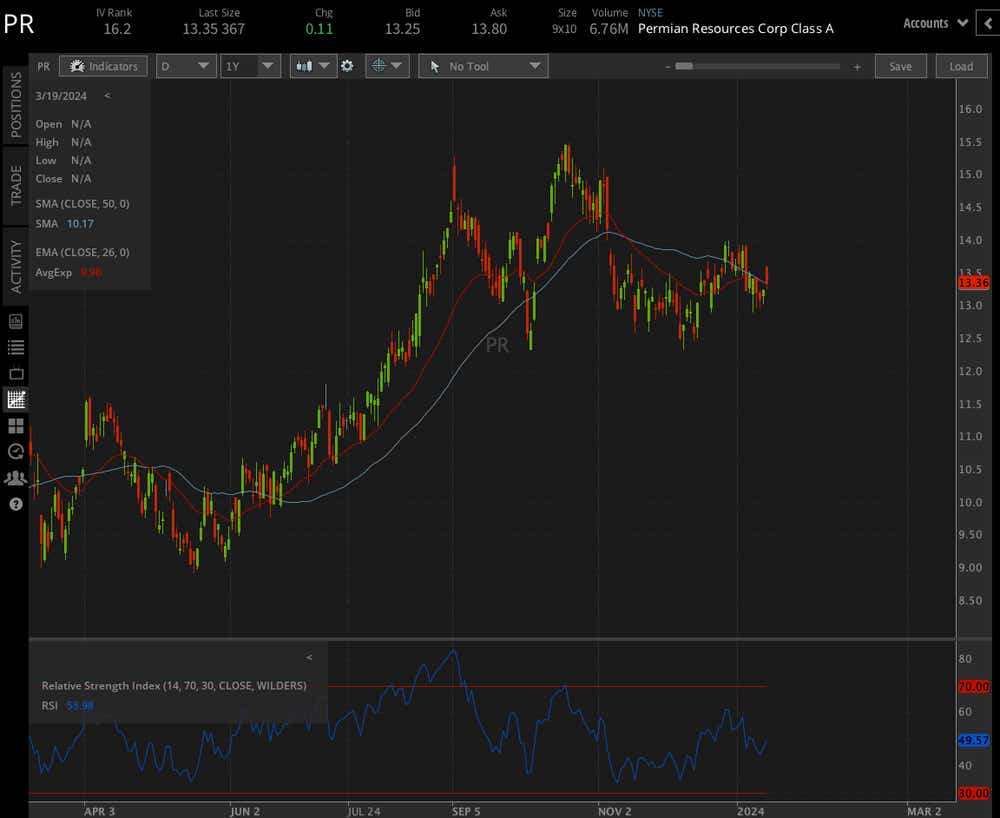Top 3 Energy Stocks for 2024

Top 3 Energy Stocks for 2024
Three energy stocks to consider, focusing on companies that have made strategic acquisitions in the Permian Basin over the last year
- Top three energy stocks for 2024: OXY, CHK, PR.
- Resilient crude oil prices and LNG growth to bolster energy markets.
- Companies in focus have all made recent acquisitions in the Permian Basin.
Crude oil prices (/CL) fell in the last three months of 2023 as demand for the commodity eased alongside broader economic measures amid elevated interest rates in the United States and elsewhere. However, prices stabilized above $70 per barrel to start the year as geopolitical tensions and supply cuts buoyed the market.
Natural gas prices (/NG) remain volatile and have come off their recent lows to start 2024. In this article, we’ll analyze three energy stocks to consider putting in your portfolio, focusing on companies that have made strategic acquisitions in the Permian Basin over the last year.
Occidental Petroleum
This is one of my favorites, also listed in my Top Dividend Stocks for 2024 article. Occidental Petroleum (OXY) is one of the largest U.S. oil and gas companies, with significant operations in the Permian Basin and a well-developed midstream infrastructure.
OXY, with a strong balance sheet and dividend, looks well positioned for future growth for two reasons. The first is that OXY acquired CrownRock in December, significantly increasing its foothold as a major shale oil producer. The deal, scheduled to close in the coming months, will increase OXY’s production by nearly one million barrels of oil per day. Currently, OXY produces around 1.22 million barrels of oil per day, and analysts expect that figure to climb to 1.4 million barrels of oil per day, according to Bloomberg’s consensus estimate.
Another reason to like the stock is that investor Warren Buffett continues to acquire shares. While some other analysts are concerned about the amount of new debt created to finance the CrownRock deal, Mr. Buffett’s blessing of the stock assuages any debt concerns for those familiar with his careful analysis of debt-laden companies. Berkshire Hathaway bought over 5 million shares in December for about $312 million, upping its stake to 34%, according to a SEC filing.
.png?format=pjpg&auto=webp&quality=50&width=1000&disable=upscale)
Chesapeake Energy Corp.
Chesapeake Energy Corp. (CHK) is another large U.S. producer of crude oil and natural gas products. Just this week, the company announced it would purchase Southwestern Energy (SWN) in an all-stock deal. That would make CHK the largest U.S. producer of natural gas.
With a robust liquefied natural gas (LNG) market that experts expect to grow over the coming years, the acquisition positions CHK to lead the charge and leverage its strengths in the volatile market. CHK rose nearly 5% on the news in its best week of trading since September.
If U.S. regulators bless the deal, it will likely lead to more gains, as investors are very bullish on the LNG market over the next few years. The company has also scaled back its oil assets to focus more on natural gas over the last several years, which should improve efficiencies and allow CHK to manage expenses. The deal should close sometime in the middle of this year and cap off an M&A boom that has gripped the energy market over the past year.

Permian Resources Corp.
Permian Resources Corp. (PR) is another energy company. Its operations are weighted more toward the natural gas side, positioning it well for the boom in LNG. The company also closed its acquisition of Earthstone Energy in November, bolstering its operations in the Permian Basin.
According to Bloomberg estimates, Permian’s natural gas production is expected to increase 108% on a year-over-year basis in its fiscal first quarter of 2024. That comes with an impressive 101% growth rate in revenue from a year ago. While not as well positioned in terms of balance sheet strength as OXY and CHK, PR has obvious growth potential underpinned by a robust LNG market. While riskier, this stock could potentially deliver some impressive gains in 2024.

Thomas Westwater, a tastylive financial writer and analyst, has eight years of markets and trading experience. @fxwestwater
For live daily programming, market news and commentary, visit tastylive or the YouTube channels tastylive (for options traders), and tastyliveTrending for stocks, futures, forex & macro.
Trade with a better broker, open a tastytrade account today. tastylive, Inc. and tastytrade, Inc. are separate but affiliated companies.
Options involve risk and are not suitable for all investors. Please read Characteristics and Risks of Standardized Options before deciding to invest in options.